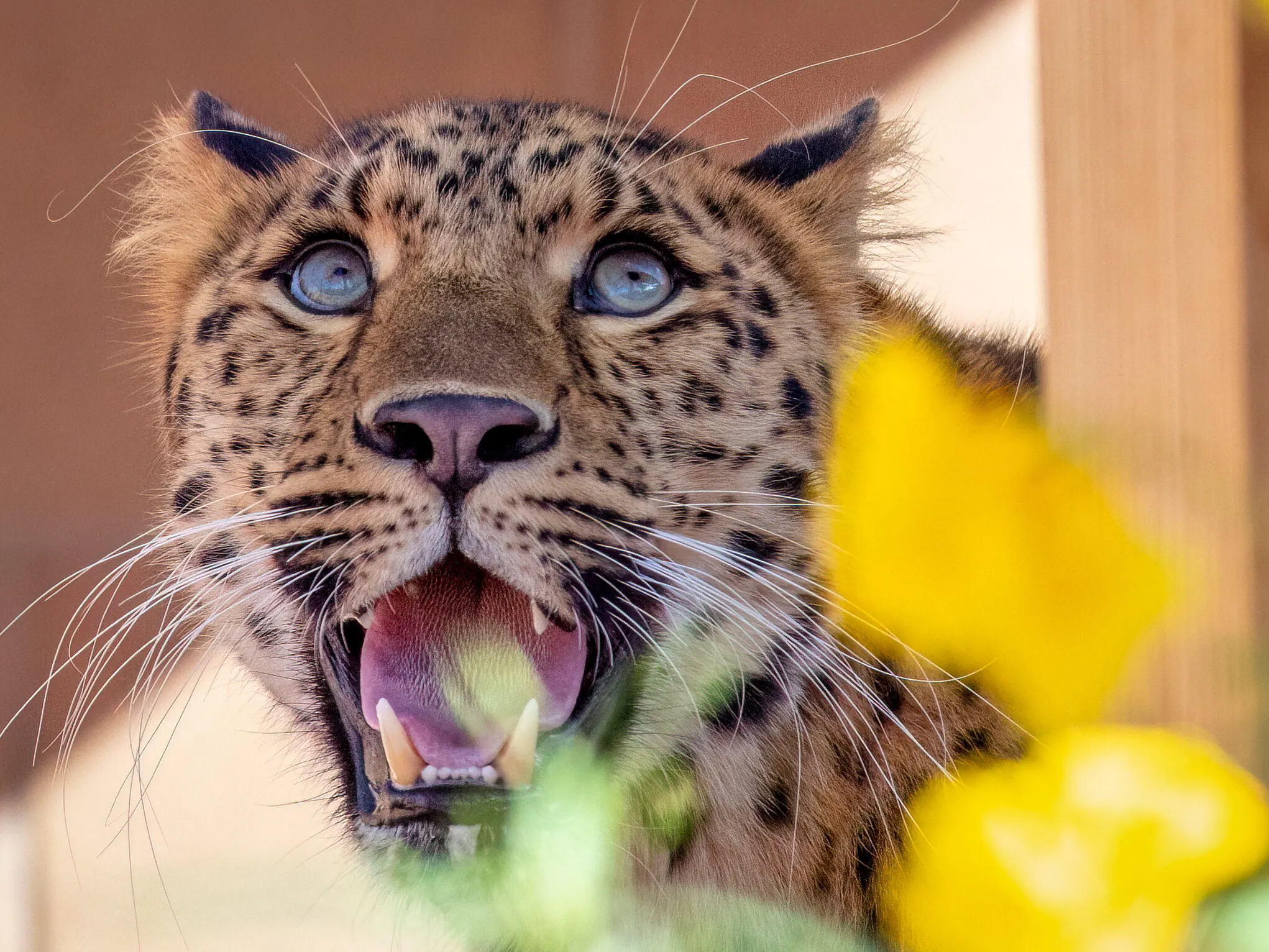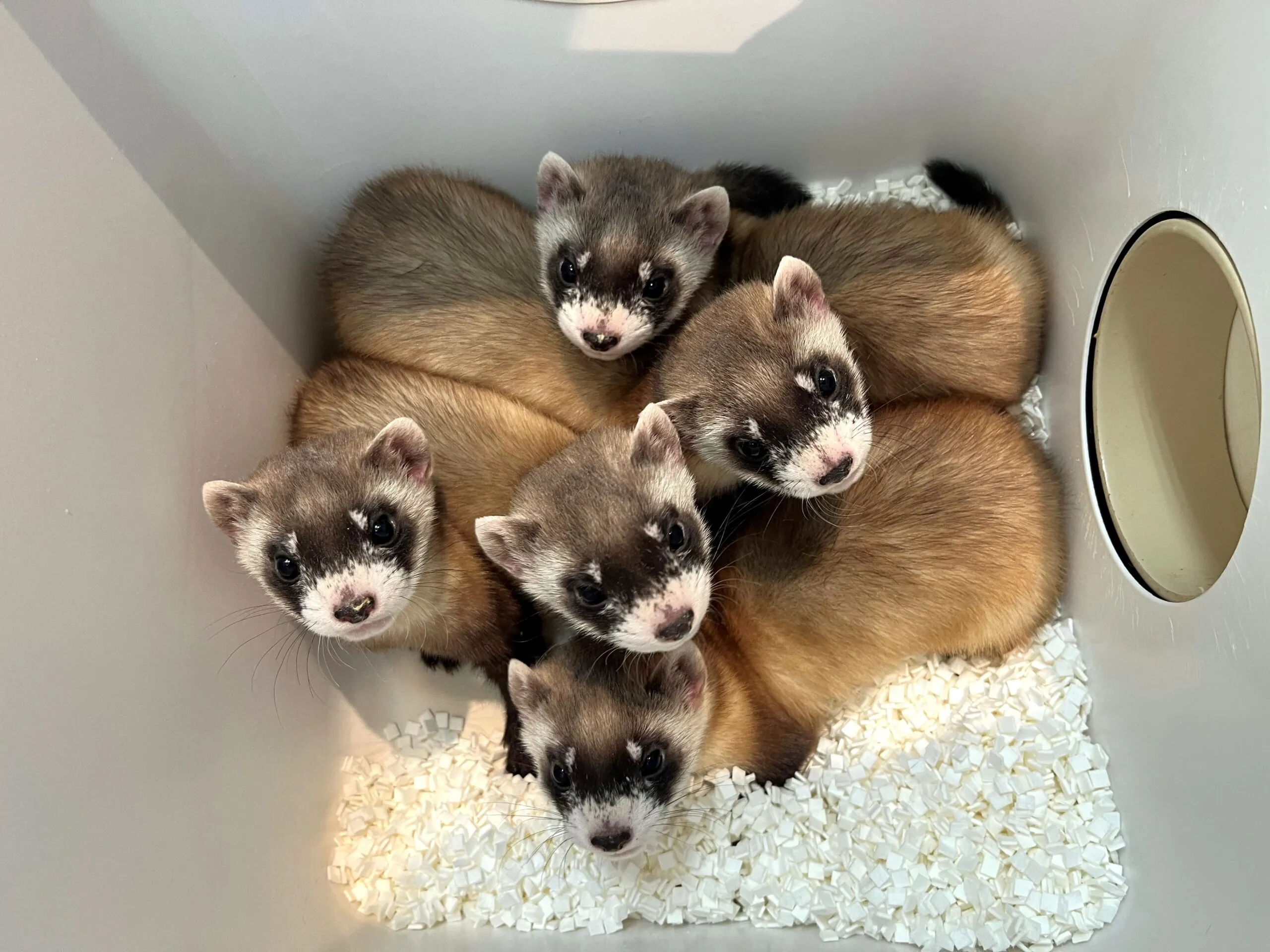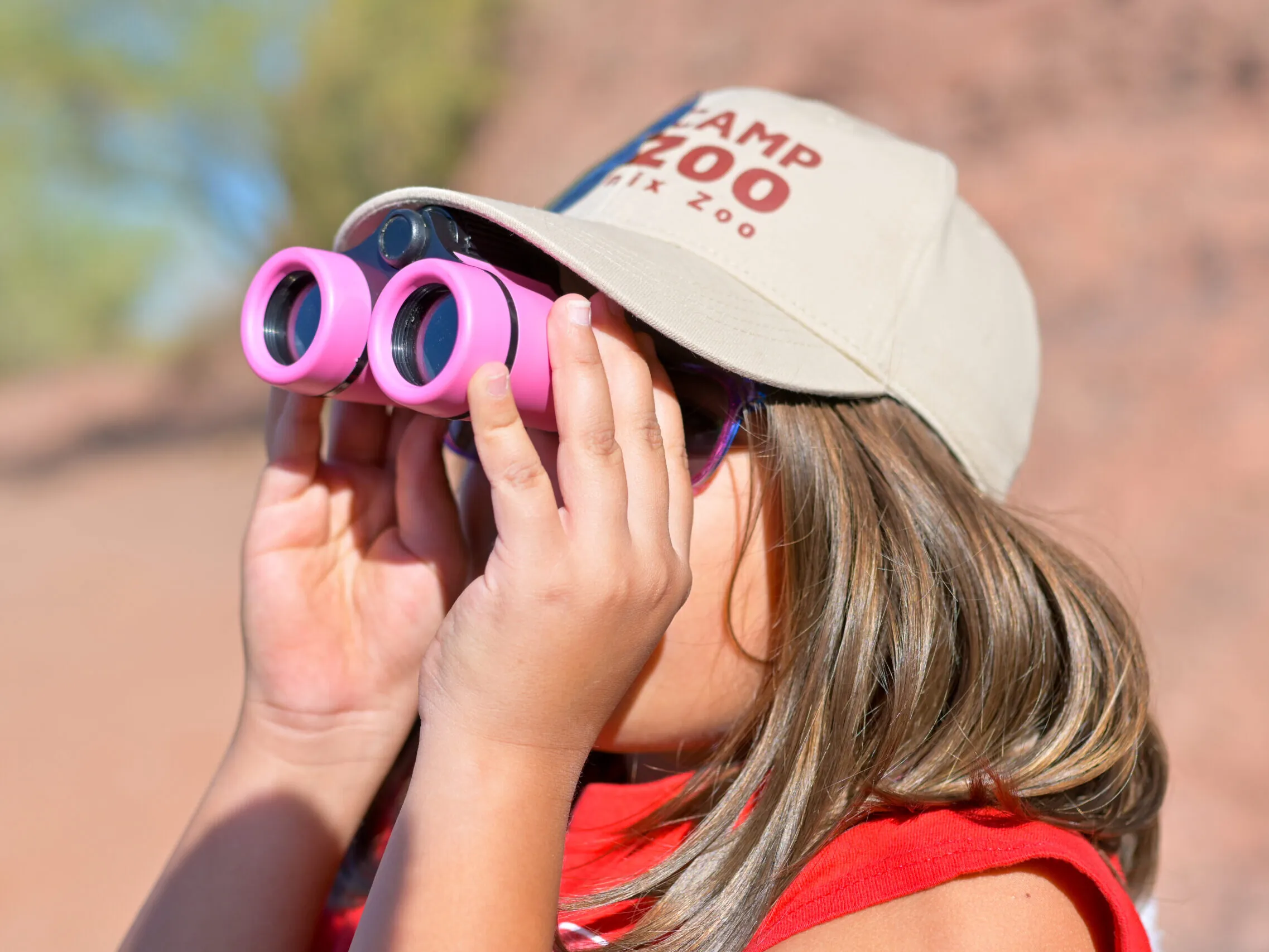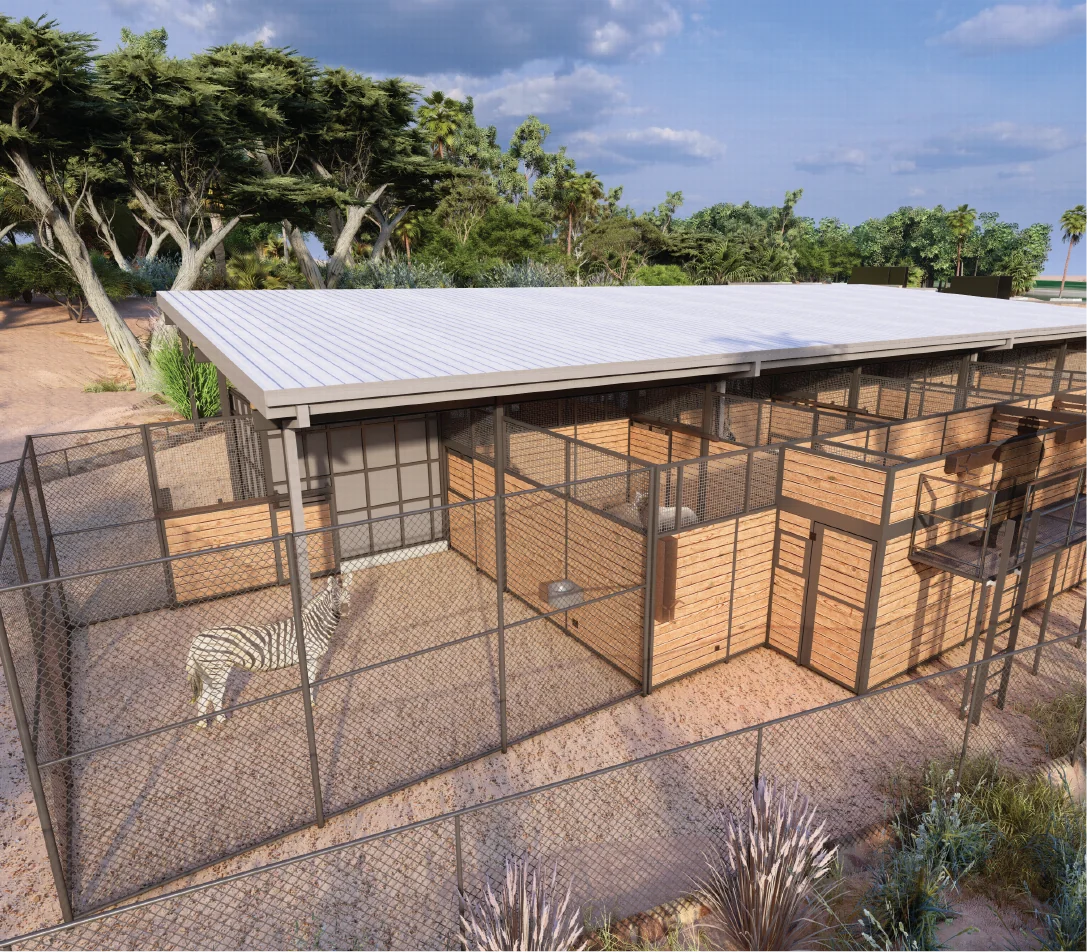B.E. Madness
It may be Selection Sunday for the NCAA March Madness tournament, but it’s also, the first official
Selection Sunday for the Phoenix Zoo B.E. Madness tournament!
Over the next few weeks, we’ll be sharing two behavioral enrichment videos a day. Don’t forget to like
your favorite videos! The video with the most likes from each match up will move on to the next round.
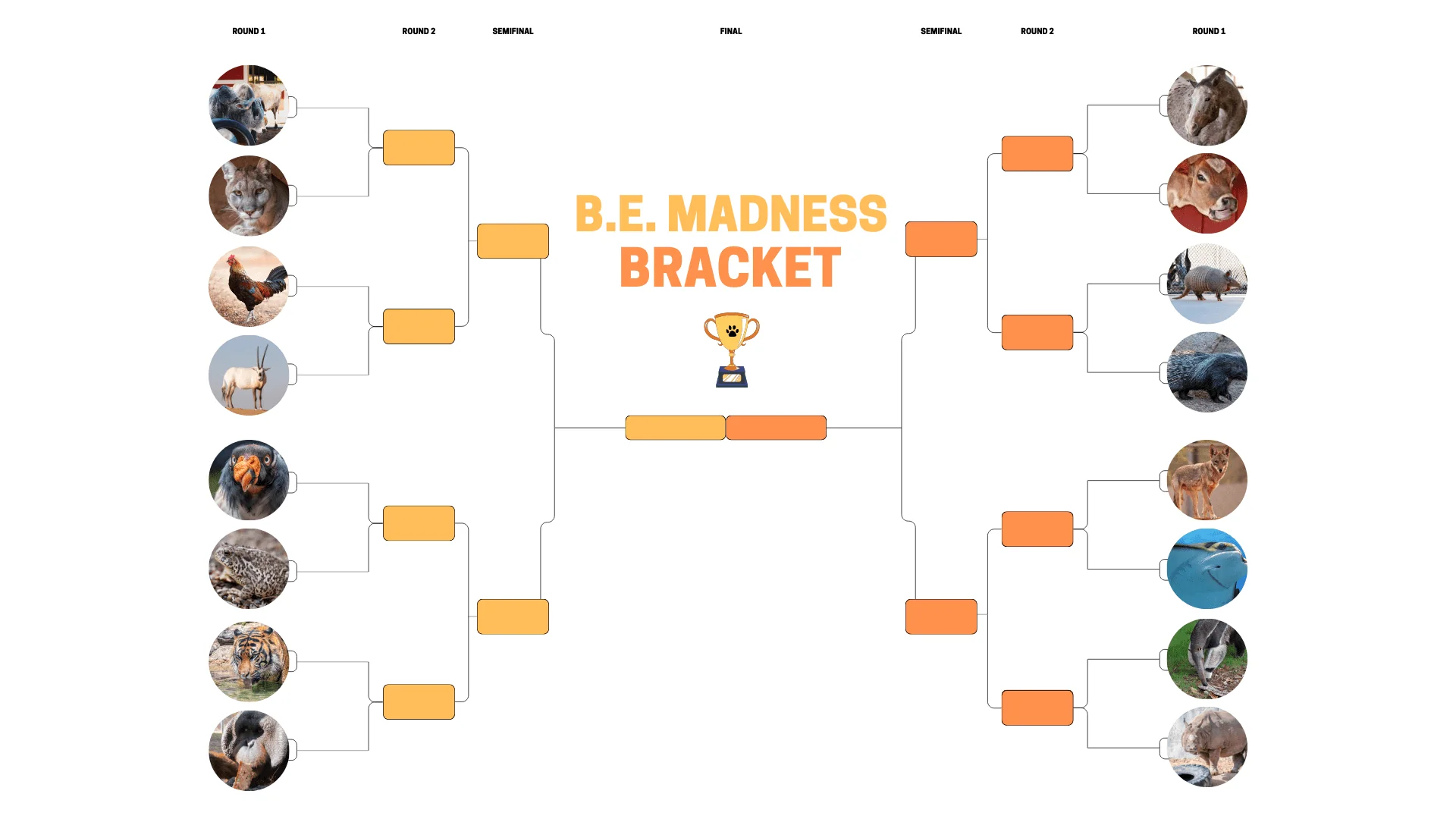
Round 1: March 18-22 and March 24-26
Round 2: March 27-30
Final Four: April 1-2
Championship: April 3
Winner!
Armadillo B.E.
Foraging or the act of searching for, acquiring, and processing food, is one of the most time-consuming behaviors an animal participates in. We always like to try to extend foraging time for our animals. Sometimes that involves utilizing specialized puzzles and other times it is using a piece of AstroTurf to make retrieving some worms just a little bit more difficult!
Championship
Tiger B.E.
Tigers are large predators, equipped with the skills necessary to take down prey. Many of the beneficial behavioral enrichment (B.E.) items for them are ones that stimulate a hunting behavior. A pumpkin, retrieved by our Nutrition Services and offered to our Sumatran tiger, Joanne, did just that. The texture of the pumpkin was perfect for her to sink her claws in to, so much so that she practices attacking it!
📸: Alyssa, Keeper II – Carnivore
Armadillo B.E.
Foraging or the act of searching for, acquiring, and processing food, is one of the most time-consuming behaviors an animal participates in. We always like to try to extend foraging time for our animals. Sometimes that involves utilizing specialized puzzles and other times it is using a piece of AstroTurf to make retrieving some worms just a little bit more difficult!
Final Four
Match-up 1:
Tiger B.E.
Tigers are large predators, equipped with the skills necessary to take down prey. Many of the beneficial behavioral enrichment (B.E.) items for them are ones that stimulate a hunting behavior. A pumpkin, retrieved by our Nutrition Services and offered to our Sumatran tiger, Joanne, did just that. The texture of the pumpkin was perfect for her to sink her claws in to, so much so that she practices attacking it!
📸: Alyssa, Keeper II – Carnivore
Arabian Oryx B.E.
Match-up 2:
Giant Anteater B.E.
Armadillo B.E.
Foraging or the act of searching for, acquiring, and processing food, is one of the most time-consuming behaviors an animal participates in. We always like to try to extend foraging time for our animals. Sometimes that involves utilizing specialized puzzles and other times it is using a piece of AstroTurf to make retrieving some worms just a little bit more difficult!
Round 2
Match-up 1:
Tiger B.E.
Tigers are large predators, equipped with the skills necessary to take down prey. Many of the beneficial behavioral enrichment (B.E.) items for them are ones that stimulate a hunting behavior. A pumpkin, retrieved by our Nutrition Services and offered to our Sumatran tiger, Joanne, did just that. The texture of the pumpkin was perfect for her to sink her claws in to, so much so that she practices attacking it!
📸: Alyssa, Keeper II – Carnivore
King Vulture B.E.
King vultures are a type of scavenger that mainly eat carrion (or decaying animal flesh). Their thick, strong beak is well adapted for tearing the meat they eat. Watch as Aragorn, the King vulture, attempts to tear into this paper mâché football concealing his meat, not only extending his foraging time, but also encouraging a natural behavior!
📸: Ryan, Keeper I – Birds
Match-up 2:
Arabian Oryx B.E.
Mountain Lion B.E.
Match-up 3:
Stingray B.E.
In the wild, animals can encounter a variety of obstacles in their environment. The great thing about behavioral enrichment (B.E.) is that it challenges them, provides mental stimulation, and offers them new experiences. The Stingray Bay keepers decided to add a bubble wall to the main tank for the cownose rays to encounter. Watch as some of them decide to go through it!
Giant Anteater B.E.
Match-up 4:
Armadillo B.E.
Foraging or the act of searching for, acquiring, and processing food, is one of the most time-consuming behaviors an animal participates in. We always like to try to extend foraging time for our animals. Sometimes that involves utilizing specialized puzzles and other times it is using a piece of AstroTurf to make retrieving some worms just a little bit more difficult!
Miniature Jersey Cow B.E.
Behavioral enrichment (B.E.) allows our animals to make choices in their environment. Miniature jersey cow, Teenie, chose not one, but two B.E. items to interact with at the same time, her jolly balls and the cattle brush! We all wish we could multi-task like her!
📸: Kierstin, Keeper I – Equine
Round 1
Match-up 1:
Tiger B.E.
Tigers are large predators, equipped with the skills necessary to take down prey. Many of the beneficial behavioral enrichment (B.E.) items for them are ones that stimulate a hunting behavior. A pumpkin, retrieved by our Nutrition Services and offered to our Sumatran tiger, Joanne, did just that. The texture of the pumpkin was perfect for her to sink her claws in to, so much so that she practices attacking it!
📸: Alyssa, Keeper II – Carnivore
Orangutan B.E.
Social Enrichment includes interactions between conspecifics (animals of the same species) and non-conspecifics (animals not of the same species) which includes other animals and also humans. Animal training falls in to this category. Our keepers work hard to establish great relationships with our animals and utilize training as a tool to do solidify those relationships, stimulate the animal’s mind, and allow the animal the opportunity to participate in their health care. In this case, Rayma, the orangutan, is increasing her activity around her enclosure by going to a laser when asked. Our animals participate in positive reinforcement training, so it’s entirely their choice if they want to take part, but with the high value reward (food) they receive, it’s a no brainer!
Match-up 2:
Woodhouse’s Toad B.E.
Sometimes behavioral enrichment (B.E.) is very obvious and other times it is not. This B.E., for example, may look like a rock, but is actually a slow, cricket feeder. It has a hole and a hollow inside for the keepers to put crickets in and then be placed in the animal’s exhibit. The crickets slowly decide to exit, offering a variable-timed and natural hunting experience for our animals, like our Woodhouse’s toad!
📸: Caitlon, Keeper I – Ectotherms
King Vulture B.E.
King vultures are a type of scavenger that mainly eat carrion (or decaying animal flesh). Their thick, strong beak is well adapted for tearing the meat they eat. Watch as Aragorn, the King vulture, attempts to tear into this paper mâché football concealing his meat, not only extending his foraging time, but also encouraging a natural behavior!
📸: Ryan, Keeper I – Birds
Match-up 3:
Arabian Oryx B.E.
Chicken B.E.
Changing how an animal’s food is presented is an easy and effective form of behavioral enrichment (B.E.). Not only does the animal have to think about how to retrieve the diet, but they are also stimulated mentally and sometimes physically while doing so. This extends their foraging time and makes for a good time for all.
Match-up 4:
Mountain Lion B.E.
Match-up 5:
Giant Anteater B.E.
Greater One-horned Rhino B.E.
Match-up 6:
Stingray B.E.
In the wild, animals can encounter a variety of obstacles in their environment. The great thing about behavioral enrichment (B.E.) is that it challenges them, provides mental stimulation, and offers them new experiences. The Stingray Bay keepers decided to add a bubble wall to the main tank for the cownose rays to encounter. Watch as some of them decide to go through it!
Coyote B.E.
Match-up 7:
Armadillo B.E.
Foraging or the act of searching for, acquiring, and processing food, is one of the most time-consuming behaviors an animal participates in. We always like to try to extend foraging time for our animals. Sometimes that involves utilizing specialized puzzles and other times it is using a piece of AstroTurf to make retrieving some worms just a little bit more difficult!
Match-up 8:
Miniature Jersey Cow B.E.
Behavioral enrichment (B.E.) allows our animals to make choices in their environment. Miniature jersey cow, Teenie, chose not one, but two B.E. items to interact with at the same time, her jolly balls and the cattle brush! We all wish we could multi-task like her!
📸: Kierstin, Keeper I – Equine
Horse B.E.
We love to offer our animals new experiences. During the summer months, our Equine staff will sometimes bring the horses over to the elephant yard for a dip in the pool, new smells, and plenty of obstacles for them to navigate in the environment!
📸: Christine, Sponsorship Manager


